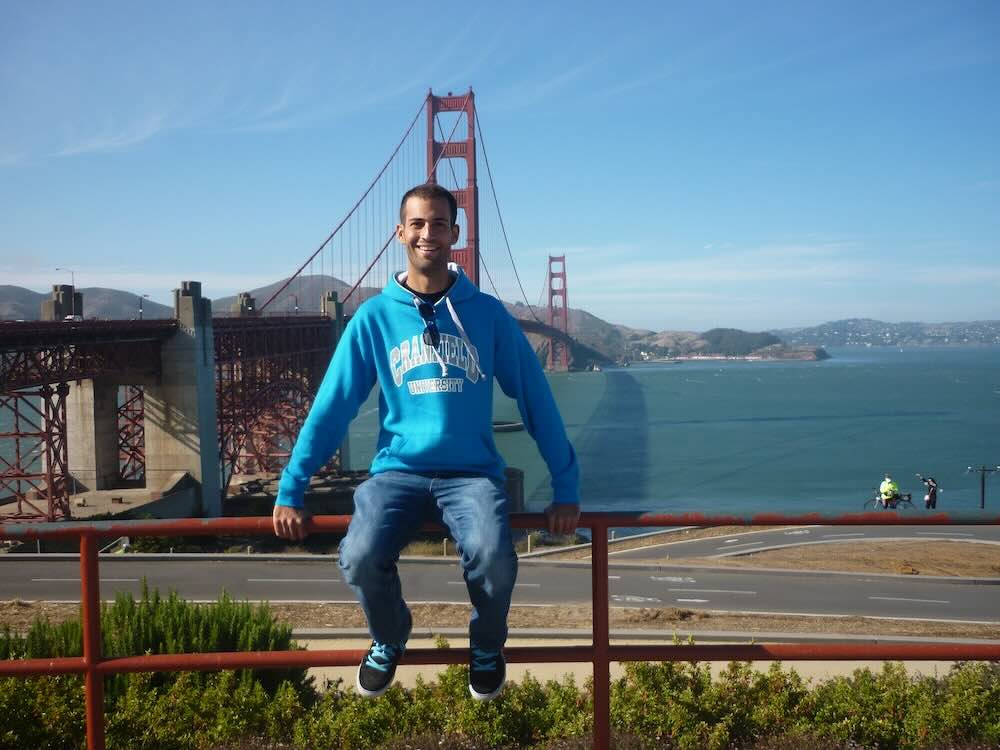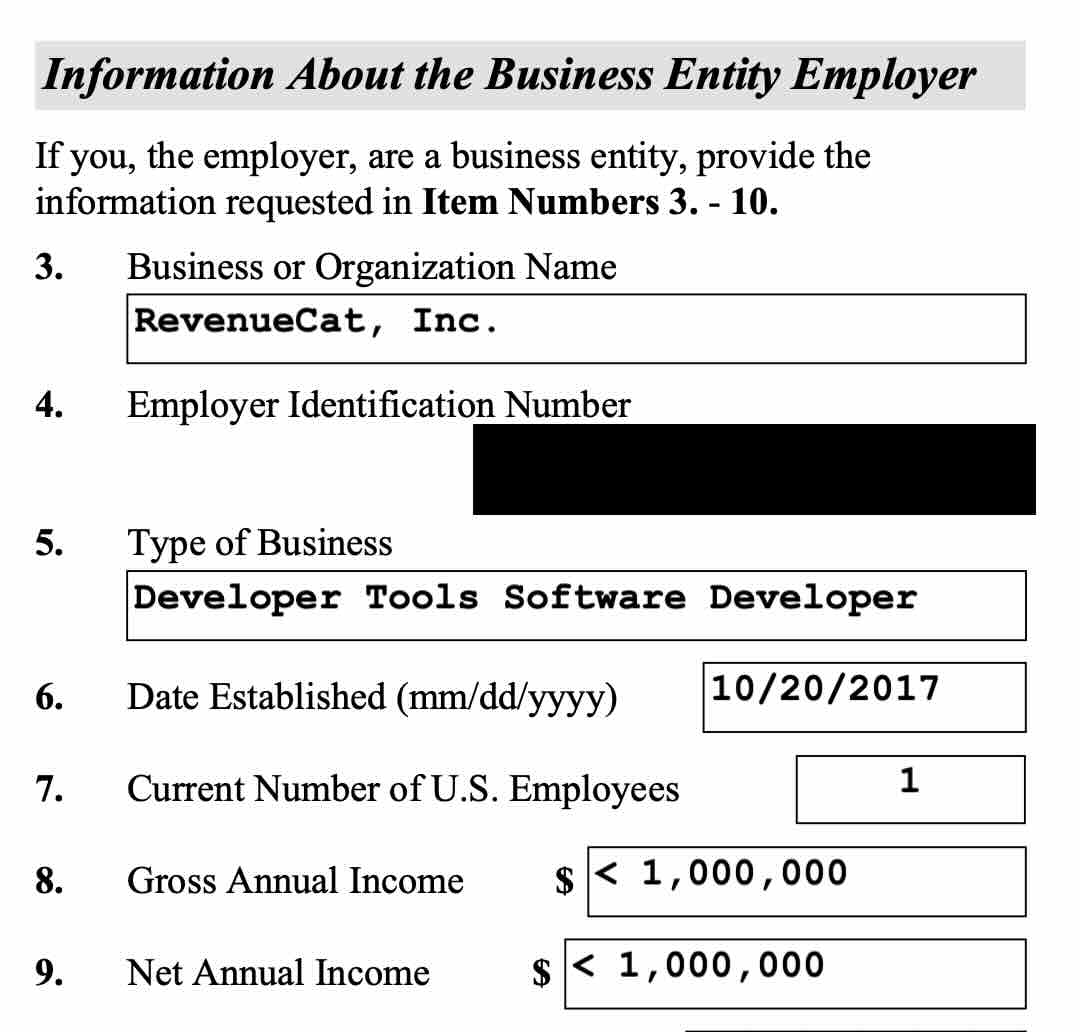From J1 visa to Blue Passport: A startup founder's immigration journey
Read time: 6 minutes.
I am drafting this post at 35,000 feet flying back from Japan. I’ve entered the US about 30 times, but this will be the first time I’ll be using my shiny blue passport. No anxiety about aggressive questions, secondary inspection, or the possibility of deportation. A couple of days ago, my wife had her naturalization ceremony, and with her, our whole family is now American. This is a reflection on our 11-year immigration journey.
My American Dream
My story with technology started at 8, with my first computer. I fell in love and decided that one day I would start a computer business. And of course, it would have to be in Silicon Valley, the epicenter of innovation. I grew up influenced by the iconic Californian lifestyle of the 90s, from Tony Hawk to bands like Blink-182 and The Offspring, which only fueled my desire to call the West Coast home.
As I finished my Computer Science studies, the reality of achieving my American dream seemed increasingly distant. My enthusiasm for the Californian way of life hadn’t waned — I had started surfing and I was even playing in a pop-punk band. But the immigration complexities were too daunting. It looked impossible. I decided to study a Master’s Degree in the UK and reinforce my English.
Right before completing my degree in England, I was offered a six-month internship at a startup in San Francisco. Financially, it was not the smartest decision — I would barely be able to afford rent, despite having better paid options in Europe. However, experiencing Silicon Valley was a lifelong dream. It wasn’t an obvious choice. But I ultimately packed my suitcase, left behind my family, girlfriend and friends, and relocated across the world.
Landing in California

My journey in the U.S. began with a J1 visa, intended for interns and relatively simple to secure with an employer’s backing. It was a suitable fit for my six-month plan, extendable to a full year, without any ambition for a longer stay. Yet, I worked extremely hard, and the situation changed when I was introduced to the possibility of obtaining an H-1B visa. Unlike the J1, the H-1B visa demands wage parity with U.S. citizens, allows for a stay of up to six years, and paves the way for permanent residency. Most importantly, it meant I could start laying down roots in the US, such as building my credit score, buying a car, or negotiating a long-term lease.
First Immigration Problems
My living situation dramatically improved when I traded my small, rat-filled room for a two-bedroom apartment in the Outer Sunset, sharing the space with a friend. I got a sizeable salary bump. However, the happiness was short-lived. H-1B visa applications had exceeded available spots for the first time in years, introducing a lottery. My coding skills, education, and value to my employer wouldn’t factor into this gamble. Anxiety mounted for a very long month, as friends celebrated their visa wins. I was left in the dark, bracing for bad news. Against the odds, relief came just a day after a disheartening talk with my immigration lawyer, granting me my first taste of luck.
Reuniting with my girlfriend
Sick. My H-1B visa approval meant I could make the US my home for six additional years, longer than Marina and I had been dating. As she was about to end her studies, we strategized on ways to reunite in the US. Marrying earlier was an option, but with H-1B restrictions preventing spouses from working, we looked for alternatives. The easiest path forward involved securing a student visa, leading to a 12-month work permit, followed by an H-1B visa application. In the competitive climate of 2015, her work visa acceptance felt nothing short of miraculous, becoming our story’s second lucky strike.
Permanent Residency
While six years might seem long, they pass quickly when you are busy and having fun. Halfway through, it became clear we needed to strategize for the future when it was time to renew my visa. My employer agreed to initiate the Green Card application, a lengthy and costly process requiring proof that I was indispensable for the company. Despite the complexities, our attorney believed the case would progress smoothly, estimating an 18-month completion time.
Surprisingly, the initial phase went way faster than anticipated, prompting our attorney to suggest an immediate wedding for Marina and me, a necessary step to include her in the Green Card application. We quickly scheduled our wedding at the Spanish Consulate in San Francisco, departing from our original plan for a ceremony in Spain.
More problems
A year and a half in, expecting our Green Cards, we faced an unexpected challenge: our marriage, officiated at a consulate, was not recognized by US Immigration, compelling us to marry again, pay the associated fees again, and start the process over. This development was extremely frustrating, specially as my friend Jacob and I were contemplating founding a company, and the absence of a Green Card meant remaining as an employee.

To rectify the situation, we promptly got remarried at San Mateo City Hall, choosing it for its rapid scheduling. Two months later we held another ceremony in Spain with our family and friends (our third marriage overall).
The delay in our reapplication, exacerbated by the recent election of Trump and a subsequent slowdown in immigration services, led us into a stressful period of uncertainty. Our inability to make definite plans, from household purchases to housing arrangements left us anxiously awaiting any news on our application. As we navigated this uncertainty, the possibility of dedicating myself fully to our startup (later named RevenueCat) became increasingly dim.
Going All In
A pivotal moment came when our now startup, RevenueCat, was accepted into Y Combinator, requiring my full-time commitment. A big challenge due to my pending Green Card application. My immigration status became the biggest risk to our startup, even before launching.
In searching for a solution, we identified a potential hack: an immigration loophole that allowed for employment changes under specific circumstances. It wasn’t risk free. There were no guarantees, and it involved giving up my H-1B status and the ability to travel. Should my Green Card application face rejection for any reason, I would instantly become an illegal immigrant.
Deciding to take the gamble, we prepared the necessary documentation. To support our case, Jacob, my co-founder, had to write a letter stating that although my compensation was on the lower side, his, in the CEO role, was even lower. We also had to declare our company’s annual earnings ($0 at that time), and I suggested Jacob to specify it as less than $1 million. You should never lie to Homeland Security 😅.

This leap of faith paid off; eight months later (three years after original application), we received our Green Card interview, where the immigration officer, making fun of our unique circumstances, granted approval on the spot.
The Decision to Become American
Those with an employment-based Green Card need a five-year stay in the US, compliant with all laws and tax requirements, to qualify for citizenship. While obtaining citizenship is not mandatory, and one might choose to stay a permanent resident indefinitely, citizenship confers full rights and responsibilities. Among these, the requirement to pay federal taxes forever, a big concern for many.
If RevenueCat succeeds as we hope, I’m looking at significant tax payments, even if we end up moving back to Europe. The decision to embrace US citizenship came down to a simple reason: we can. We recognize the privilege of this choice, acknowledging the series of fortunate events that brought us here, aware that our journey could have taken decades had we originated from countries like India or China. Our twin daughters are blessed with dual citizenship, offering them a breadth of choices for their future. The opportunities the US has presented to our family are beyond what we once could dream. By becoming citizens, we gain a voice to influence immigration policies positively instead of blocking progress.
My tax contributions have already reached the seven-figure mark. The continuation of our tax obligation is a small price to pay. And after all, there are some advantageous double taxation agreements 😉.
Special thanks to my family for always supporting me and pushing me to live my dream in San Francisco. To Marina, my now 3x wife, for joining me in this crazy adventure across the globe. To everyone at StepOne for running an amazing internship program. To Jesse, for believing in my potential and tackling the immigration challenges with me. And to my co-founder Jacob, for pushing me to take a leap of faith with my immigration status.
Subscribe via RSS